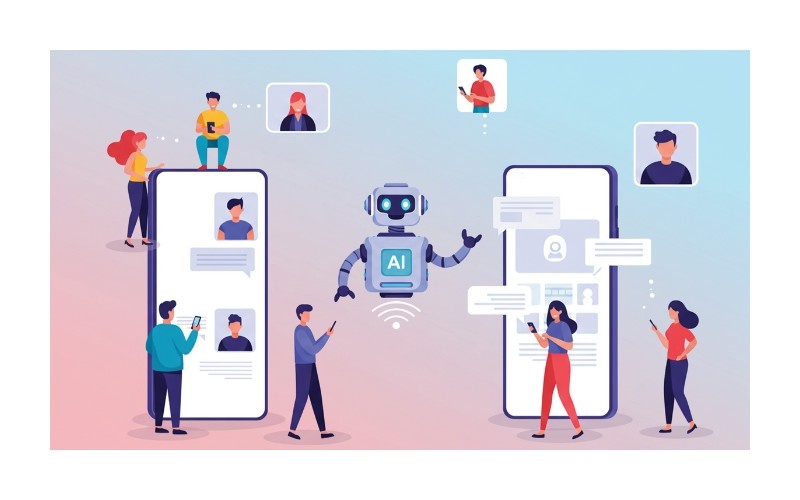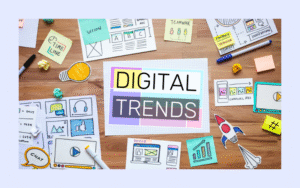Security in a Rapidly Evolving Digital Landscape
Security in the age of AI, where the applications run on machine learning models and are surrounded by cloud-based services, has never looked so complicated. Builders and organizations are exposed to a new genre of threats, vulnerabilities, and regulatory requisites that were never used to be identified several years back. Whether we are talking about an app, deep fake misuse, or adversarial attacks on artificial intelligence (AI) models, user authentication or corporate-owned databases are no longer enough to safeguard the app. The current level of data security requires insight into how data is moved throughout AI-based systems, how a model can be instrumented, and how an attacker may attack not just the code of a specific app but also its algorithms and training data.
By 2025, applications will become smart, customized, and speedy. Users share vital information with these apps to the tune of volumes and volumes of sensitive data; they give them behavioral patterns, biometric data, and so on. However, such convenience and smartness cost something: AI systems create new lines of attack that conventional security measures might fail to address. The developers have to start thinking not only as engineers but also as data scientists, threat analysts, and privacy adherents. The AI era of security is neither technical nor narrowly tactical; it is strategic and ethical, and the AI-curity is all ingrained in products.
The Foundation: Secure Architecture from Day One
The AI era of apps begins with the safe architecture development of the app on the ground. Security can not be an afterthought or a plug-in. It must become an underlying principle that is embedded in the planning, designing, and deployment process. These also incorporate the choice of safe cloud, restrictive model-based access to least privilege, and secure API to AI integration. All the low-level components dealing with user input, model inference, or insecure storage have to be covered by tight validation and monitoring policies.
Microservices, containerization, and cloud-native architecture are areas where AI-enabled apps tend to depend, but this creates a new set of risks. As an example, an API that gives access to an AI model can reveal the decision-making logic of the whole application. On the same note, data lakes that are not properly set up or containers that are poorly secured may cause the breach of huge AI training data. Thus, developers of apps should provide secure communications among the services, actively patch, and use well-maintained security libraries that protect against exploits across the rest of the technology stack.
Securing Data: The Fuel of AI Applications
Any AI-driven application is run on data. Whether it is real-time data streams or past datasets, how secure and good the quality of the data remains dictates how safe the AI outputs will be. The AI era demands the encryption of data in at-rest and in-transit, but also that the data themselves are guaranteed to remain intact during the training, inference, and updating. This needs highly effective key management systems, secure data pipes that are secure, and constant anomaly detection.
Besides, privacy-preserving methods like differential privacy, data anonymization, and federated learning are turning into a norm. Such approaches give AI models the ability to learn with the aid of user data without the data necessarily being exposed to developers or third parties. To illustrate, the federated learning stores information on the device of the user and sends only the updated models, which decreases the risk of a leak in centralized data. In strictly controlled industries such as healthcare and finance, the application of these methods can result in innovation or the creation of legal liability.
Model Security: Protecting the Intelligence Layer
Security in the traditional apps is endpoint, code, and infrastructure-oriented. The latest layer to defend is the model itself in the AI apps. Adversarial Machine learning models can be reverse-engineered, poisoned, or exploited using adversarial data. By providing their arbitrarily altered data with slight manipulation to an AI model, attackers can produce inaccurate results in the process, which can result in fraud, misinformation, or even reputational loss.
Model developers should defend their models through such methods as input validation, model watermarking, and adversarial training. Input validation can be used to intercept malformed data or suspicious data on its way to the inference layer. Developers can use model watermarking to trace and locate stolen or copied models utilized in unauthorized and unpermitted usage. In the meantime, adversarial training makes a model in development more robust to so-called edge cases, i.e., the specific manipulation that can attack them in actuality.
Another way of securing AI models is through version control and access control. Depending on the severity of the model, it must be treated as a sensitive codebase, with logging, audit trails, and multi-tiered permission systems. This is particularly fatal when they are made available through API third-party apps or to users.

Authentication and Access in an AI-First World
Authentication of users has become more than having a password field. Safe applications in 2025 use multi-factor authentication (MFA), biometric scans, and behavioral analytics to recognize users. AI-based apps should take a step forward and track the behavior of the user, not only during the login. These systems monitor the speed of typing, movement, and frequency of interaction as a way to identify abnormalities, which can be an indication of compromised accounts.
The necessary technologies in AI applications are role-based access control (RBAC) and zero trust. These systems restrict users and services to only get what is necessary, and thus, breaches do not affect the systems much. A model that recommends financial products, e.g., must not be able to access raw health data, unless expressly allowed. The issue of designing secure identity and access management systems is even more critical given that a combination of AI services or third-party plugins is integrated into the apps.
Ethical AI and Regulatory Compliance
Security does not exclusively entail preventing hacking, but it is also concerned with securing user rights as well as the ethical use of data. During the AI era, abuse may be in-house. It is possible that prejudiced algorithms, obscure determination, or too much spying might be just as destructive as a hacker attack. The security goals of developers now include fairness, accountability, and transparency.
Laws like the EU AI Act, California CPRA, and other legislation in most countries worldwide are imposing stringent guidelines on the use of AI applications on how data is processed, decision explanations, and the availability of legal redress. The process of compliance needs specific documentation of training data sets, the parameters of models, and decision logs. Apps should also have the possibility of users either leaving the decision to AI or demanding a revision. Developers have to guarantee that policies on the usage of the data are well-spelt, enforced, and reviewed periodically.
What is more, AI systems should be auditable. Essentially, either by using explainable AI (XAI) tools or third-party analysis of models, the secure application should show that its model is acting well and does not fall outside of legal supervision. This is where in this regard, transparency is not only good ethics, it is also good security.
DevSecOps and Continuous Monitoring
The emergence of DevSecOps has altered the process of creating secure applications. DevSecOps moves security testing into each phase of development, replacing the old style of managing security as a distinct operation. This implies using vulnerability scanning tools (whether for vulnerabilities in code, in data pipelines, in AI models, and APIs) within your CI/CD pipeline, and enabling it to automatically scan your code.
In the current state of affairs, continuous monitoring tools are employing AI themselves to provide real-time threat detection. These systems scan logs, user activity, system performance, and network traffic to identify anomalies based on potential breaches or exploits. Rather than waiting to be exploited, secure applications in the AI era have predictive tools available to them which can spot the telltale evidence of being compromised, and automatically respond- isolating services, reversion to prior states, or alerting administrators.
Its incident response plans should also be modified to include AI-specific threats. So, how can you deal with a chatbot that advises in a biased or harmful way? Or is your recommendation engine displaying spun materials? The prior planning of such situations guarantees quicker re-covers and improved protection of the users.
Conclusion: Building Trust with Secure Intelligence
In the future (year 2025), it will not be enough to have customary firewalls and access controls in order to construct a secure application. It requires multiple-layered solutions, which could be a combination of good architecture, moral design of AI, monitoring, and user education. All stages of the AI development lifecycle, including ingesting data, training models, and serving inference, should be viewed through the perspective of security industrial practice.
The future secure apps promise to not only be protective and adhere to the regulations but will win user trust through openness, ethical nature, and resilience. Developers should meet the challenge of creating not only smart but also secure by design applications, as software and hardware companies are increasingly incorporating AI into all of their digital experiences.














